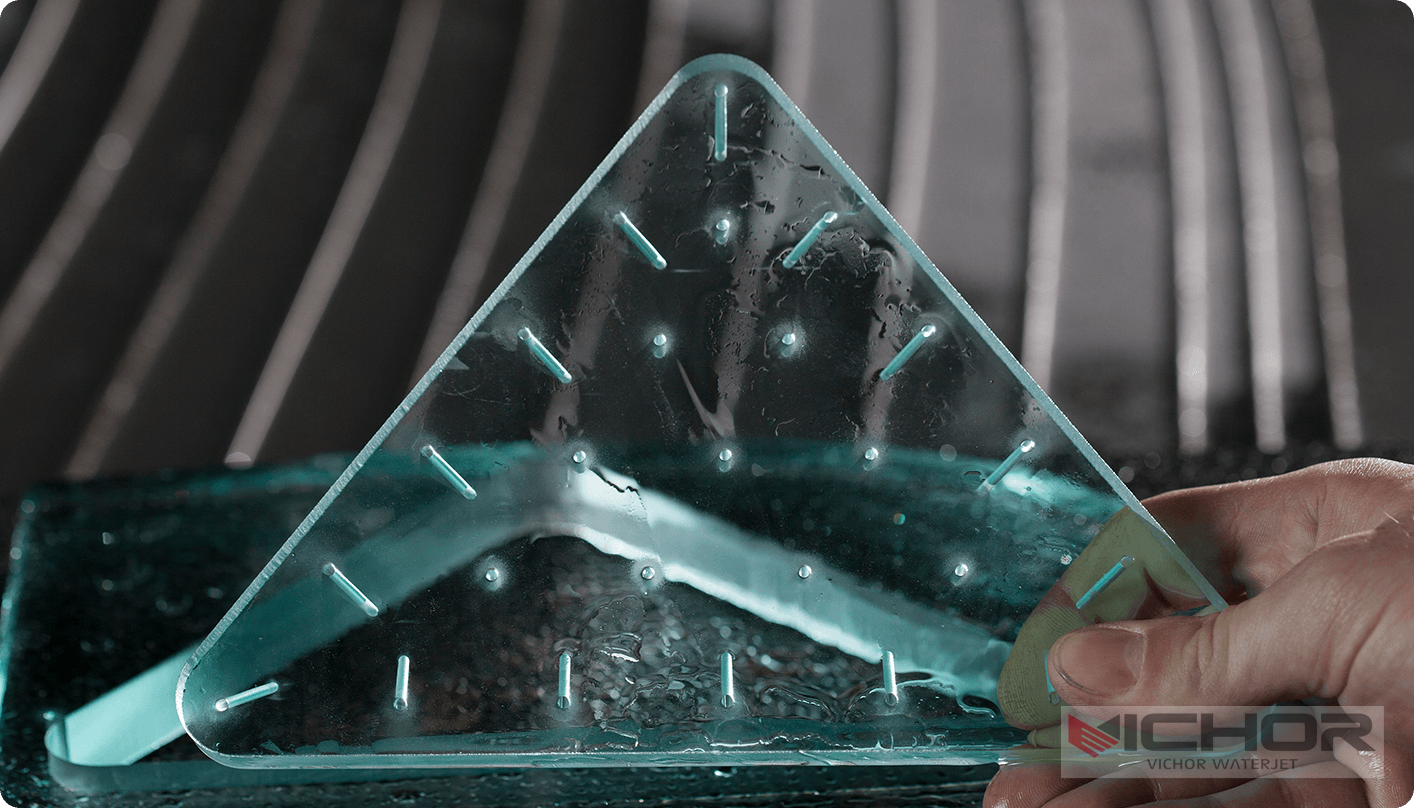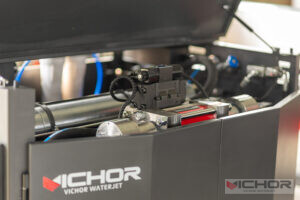
Unveiling the Most Powerful Waterjet: Capabilities, Applications, and Insights
In the realm of industrial cutting and material processing, few tools command as much respect for their raw power and versatility as the waterjet. While standard waterjets are commonplace, the title of the most powerful waterjet represents the pinnacle of this technology, pushing the boundaries of what is possible. These are not merely tools for cutting; they are engineering marvels designed to tackle the world’s toughest materials and most massive components. This article delves deep into the world of ultra-high-pressure waterjet systems, exploring what makes them tick, what they can achieve, and the critical questions surrounding their operation. If you’re involved in heavy fabrication, mining, aerospace, or any field where cutting through immense thicknesses is a daily challenge, understanding the most powerful waterjet is essential.
What Truly Defines a Most Powerful Waterjet?
When we talk about a most powerful waterjet, we are primarily referring to the immense pressure generated by its intensifier pump. While a typical industrial waterjet might operate between 60,000 to 90,000 PSI (4,000 to 6,200 bar), the most powerful systems consistently operate at pressures exceeding 94,000 PSI (6,500 bar) and can reach up to 110,000 PSI (7,600 bar) or higher. This extreme pressure, focused through a tiny orifice, creates a supersonic stream capable of phenomenal feats. However, power isn’t just about pressure; it’s a combination of the pump’s durability, the precision of the cutting head, and the system’s ability to maintain that peak performance over sustained periods. The most powerful waterjet is a complete, integrated system built for relentless, heavy-duty application.
The Heart of the Beast: The Ultra-High-Pressure Pump
The core of any most powerful waterjet is its pump. Almost universally, these are intensifier-type pumps. An intensifier works by using hydraulic pressure on a large piston to drive a small piston that pressurizes the water. This design is inherently capable of generating and sustaining the extreme pressures required.
Robust Components: These pumps are built with hardened ceramics and super-alloys to withstand the incredible forces and the abrasive nature of the water itself. The seals and check valves are engineered for longevity, as maintenance at these pressures is a critical consideration.
Constant Pressure Technology: Advanced systems maintain a constant pressure regardless of the number of cutting heads being used. This ensures that the cut quality remains impeccable, whether you are operating one head or three simultaneously on a single pump.
High Horsepower Drives: To generate such pressures, these pumps are driven by powerful electric motors, often ranging from 100 to over 300 horsepower. This substantial energy input is what separates a standard machine from the most powerful waterjet.
Unmatched Capabilities and Material Applications
The capabilities of a most powerful waterjet are what make it an indispensable asset in demanding industries.
Extreme Thickness Cutting: This is its primary domain. Where a standard waterjet might struggle with materials over 6-8 inches thick, the most powerful waterjet can cleanly cut through metals, composites, and stone exceeding 12 inches (300 mm) and even up to 18 inches (460 mm) or more in certain materials.
Unrivaled Versatility: The principle of abrasive waterjet cutting remains the same: the ultra-high-pressure water stream accelerates a granular abrasive (like garnet) that does the actual cutting. This means a most powerful waterjet can cut virtually any material—titanium, tool steel, armor plating, bulletproof glass, granite, and advanced composites—without altering the material’s inherent structure (no Heat-Affected Zone).
Speed on Thick Materials: While slower on thin materials compared to lasers or plasma, the most powerful waterjet significantly outperforms all other methods on very thick sections. It maintains a faster, more consistent cutting speed through 8-inch steel than a lower-pressure system could ever achieve.
Key Industries Relying on This Power
The application of the most powerful waterjet is critical in sectors where failure is not an option and materials are exceptionally tough.
Aerospace and Defense: For cutting thick titanium and aluminum alloys for airframes, advanced composites for radomes, and armor plating for military vehicles.
Heavy Machinery and Manufacturing: Used for creating massive gears, thick pressure vessels, and components for mining and construction equipment where dimensional accuracy in thick steel is paramount.
Shipbuilding: Ideal for cutting thick hull plates and complex shapes in high-strength, corrosion-resistant steels.
Energy Sector: Employed in the fabrication of components for wind turbines (massive hubs and gears), nuclear power plants, and oil & gas exploration equipment.
The Critical Role of Advanced Control and Software
Harnessing the power of such a machine requires sophisticated control. The software driving a most powerful waterjet is as important as its pump. It must manage complex motion control to maintain nozzle standoff and cutting speed with extreme precision. Advanced features include:
Taper Compensation: Automatically adjusts the cutting path to eliminate the natural V-shaped taper that occurs in deep cuts, producing parts with perpendicular edges.
Dynamic Water Management: Intelligently controls the on/off function of the water and abrasive to minimize dwell marks and ensure sharp corners.
Multi-Axis Cutting: Many of the most powerful systems are equipped with 5-axis heads, allowing for bevelled cuts and the ability to create complex, three-dimensional parts from thick blocks of material.
Common Questions About the Most Powerful Waterjet
1. What is the primary maintenance challenge with such a high-pressure system?
The most significant maintenance focus is on the high-pressure components, particularly the seals, check valves, and the orifice in the cutting head. The relentless pressure and abrasive slurry cause wear. However, modern most powerful waterjet systems are designed with predictive maintenance in mind, featuring hour meters and monitoring systems that alert operators to impending service needs, preventing unscheduled downtime.
2. How does the operating cost compare to lower-pressure systems?
The initial investment and operational costs are higher. They consume more electricity, and the wear on consumables (orifices, focusing tubes, abrasive) can be more rapid if not properly managed. However, the return on investment is calculated based on throughput. The ability to cut thicker materials faster and to take on jobs that are impossible for other machines often makes the most powerful waterjet the most cost-effective solution for specific, heavy-duty applications.
3. Can these systems achieve a fine surface finish on thick materials?
Yes, but it requires optimization. Cut quality is a function of pressure, abrasive flow rate, and cutting speed. By reducing the speed, a most powerful waterjet can produce a remarkably smooth surface finish even on very thick materials, often eliminating the need for secondary machining operations. The higher pressure provides more control over this “striation” pattern, allowing for finer finishes at more practical cutting speeds than lower-pressure machines.
4. Is the noise level significantly higher than standard waterjets?
Yes, the noise generated by the pump and the cutting stream itself is substantial. These systems are incredibly loud and almost always require installation in a dedicated, insulated enclosure or room to protect personnel and meet workplace safety regulations. Proper hearing protection is mandatory for anyone in the vicinity.
5. What about the environmental impact?
Waterjet cutting is generally considered a “green” technology as it does not produce toxic gases or a Heat-Affected Zone. However, the most powerful waterjet does generate a significant amount of spent abrasive and water slurry, known as “slag.” This waste material must be managed responsibly. Many facilities use closed-loop water recycling systems and work with waste management services to properly handle the abrasive sludge.
The most powerful waterjet stands as a testament to engineering innovation, offering a unique combination of brute force and precise control. It is the ultimate solution for industries that cannot compromise on material integrity, geometric complexity, or the sheer scale of their cutting requirements. While it demands respect in terms of investment, maintenance, and operational planning, its unparalleled ability to conquer the toughest cutting challenges on the planet solidifies its place as an indispensable tool in modern heavy industry. As materials continue to evolve and become more advanced, the role of the most powerful waterjet will only become more critical.
continue reading
Related Posts
- 1098 words5.6 min read
- 1992 words10.1 min read
- 1074 words5.4 min read


